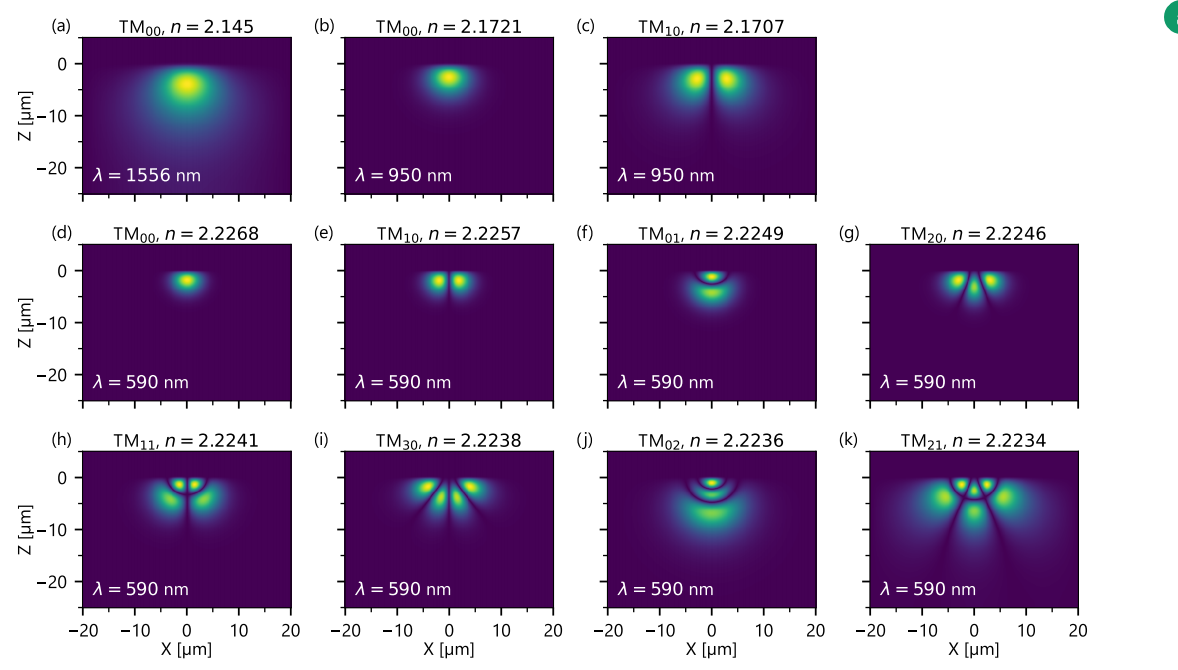
This paper investigates the cryogenic performance of titanium in-diffused lithium niobate (Ti:PPLN) waveguides for nonlinear frequency conversion, particularly focusing on spontaneous parametric down-conversion (SPDC). The research highlights the impact of cryogenic temperatures on the material properties, waveguide mode guiding, and phase-matching behavior, which are essential for efficient quantum photonic devices operating at low temperatures.
Key findings include:
Cryogenic Challenges: The performance of Ti:PPLN waveguides deteriorates under cryogenic conditions, particularly for TM-polarized light. The observed degradation is attributed to pyroelectric and photorefractive effects, which cause charge accumulation and variations in the refractive index, ultimately affecting mode guiding and phase-matching properties.
Phase-Matching Behavior: The paper discusses the effects of temperature-dependent refractive index changes on phase-matching, noting significant variations in the phase-matching spectrum under cryogenic conditions. Despite these challenges, the system remains capable of phase-matching, albeit with lower efficiency compared to room-temperature operation.
Waveguide Transmission: The transmission of TM-polarized light in cryogenic conditions is notably lower than TE-polarized light, which was less affected by the cooling process. This issue is attributed to pyroelectric charges that disrupt the TM mode more significantly.
Experimental Setup and Results: The team used sum-frequency generation (SFG) and SPDC to characterize the cryogenic waveguide, observing the behavior of photon pair generation at telecom and 950 nm wavelengths. They measured variations in photon count rates, noting that signal and idler photon detection efficiencies were reduced, especially for TM-polarized light.
Photorefractive and Pyroelectric Effects: These effects, coupled with the low mobility of charge carriers at cryogenic temperatures, resulted in altered phase-matching conditions and a reduction in nonlinear conversion efficiencies. The study suggests that the input power threshold for photorefractive damage at cryogenic temperatures is significantly lower than at room temperature.
Future Directions: The paper suggests further research into improving cryogenic performance, such as exploring TE-polarized interactions and optimizing spectral filtering to avoid noise in the SPDC process. The authors also suggest comparing the cryogenic performance of Ti:PPLN waveguides with other platforms like lithium niobate on insulator (LNOI) for better cryogenic nonlinear frequency conversion.
In conclusion, while Ti:PPLN waveguides show potential for cryogenic operation, significant challenges, such as decreased efficiency and unpredictable variations in phase-matching, must be addressed for reliable quantum photonic applications at low temperatures.
OMeda (Shanghai Omedasemi Co.,Ltd) was founded in 2021 by 3 doctors with more than 10 years of experience in nanpfabrication. It currently has 15 employees and has rich experience in nanofabrication (coating, lithography, etching, two-photon printing, bonding) and other processes. We support nanofabrication of 4/6/8-inch wafers.